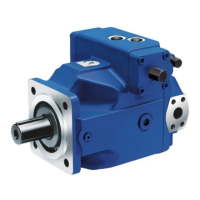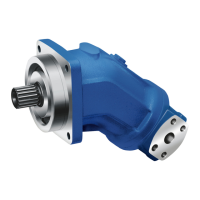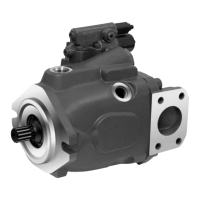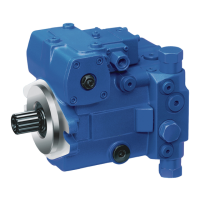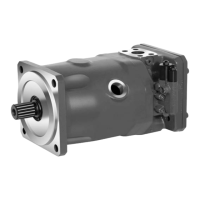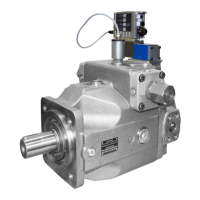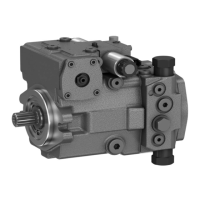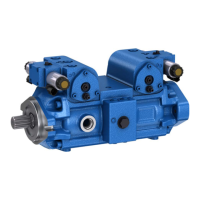
Do you have a question about the Bosch rexroth A21VG 10 Series and is the answer not in the manual?
| Brand | Bosch |
|---|---|
| Model | rexroth A21VG 10 Series |
| Category | Water Pump |
| Language | English |
Specifies the products to which this documentation applies and the intended audience.
Lists documentation necessary for commissioning and operation.
Explains how information is presented, including safety instructions and symbols.
Introduces the safety chapter and emphasizes the importance of compliance.
Defines the specific applications and limitations for the axial piston unit.
Lists uses considered improper and the associated liabilities.
Outlines the knowledge and training required for personnel handling the unit.
Provides general safety guidelines for handling and operating the unit.
Details safety precautions specific to chapters 6 through 14.
Emphasizes user responsibility for providing and maintaining personal protective equipment.
Warns against improper handling that can damage the product.
Highlights risks associated with insufficient hydraulic fluid and lubrication.
Warns against mixing different types of hydraulic fluids.
Explains the impact of hydraulic fluid cleanliness on unit service life.
Details risks and procedures for cleaning the axial piston unit.
Warns about environmental pollution from improper disposal of unit and fluids.
Warns about damage from chemical or corrosive environmental exposure.
Addresses environmental pollution and contamination from hydraulic fluid leaks.
Warns about damage to adjacent components due to heat development.
Describes the function and application of the axial piston variable double pump.
Details the A21VG's design and its two rotary groups in a closed circuit.
Illustrates and labels the components of the axial piston unit assembly.
Explains the operational principles of the pump, including pistons, cradle, and fluid flow.
Explains how to identify the axial piston unit using its name plate information.
Outlines methods for transporting the axial piston unit, by hand or with a lifting device.
Provides safety precautions for manually transporting units up to 15 kg.
Details procedures and safety warnings for lifting the unit using a lifting bolt or strap.
Specifies requirements for proper storage, including environmental conditions and maximum storage times.
Details the procedure for safely unpacking the axial piston unit.
Discusses factors influencing installation procedures, like location and position.
Describes permissible installation positions, below-reservoir and above-reservoir.
Details installation requirements when the unit is placed outside the reservoir below fluid level.
Details installation requirements when the unit is placed above the reservoir fluid level.
Covers preparation, dimensions, general instructions, and specific connection methods.
Steps to take before installing, including checking material numbers and direction of rotation.
Refers to installation drawings for dimensions of connections and ports.
Provides general installation advice, noting effects of installation position and gravity.
Describes the method for installing the axial piston unit using a coupling.
Details the installation process when mounting the unit on a gearbox.
Explains how to connect the unit to an engine using a cardan shaft.
Final steps after installation, including removing transport protection and plugs.
Covers connecting hydraulic lines, including suction pressure and routing notes.
Details electrical connection procedures, including changing connector orientation.
Covers initial steps for commissioning, including safety and connecting gauges.
Explains the importance of professional filling and air bleeding for correct function.
Describes how to test the hydraulic fluid supply, checking for noise and bubbles.
Outlines the procedure for a functional test after hydraulic supply is confirmed.
Details the running-in process, monitoring temperature, and ensuring cleanliness.
Procedures for recommissioning the unit after a period of inactivity.
Provides instructions and warnings for cleaning and caring for the axial piston unit.
Outlines the inspection schedule for the hydraulic system and the axial piston unit.
Discusses the low-maintenance nature of the unit and factors affecting its service life.
Explains Bosch Rexroth's repair services and the use of certified service centers.
Emphasizes using original spare parts and how to order them.
States that standard tools are sufficient for removal.
Steps to prepare the system and unit before removal, focusing on safety.
Step-by-step procedure for safely removing the axial piston unit from the system.
Refers to chapter 6.2 for instructions on storing components.
Provides a systematic approach to troubleshooting faults and documenting the process.
Lists common malfunctions, their possible causes, and recommended remedies.
